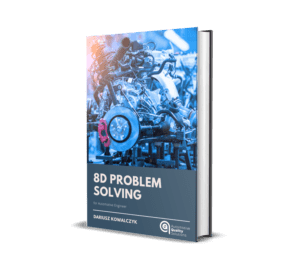8D Problem Solving ebook
for Automotive Engineer


If you work in the automotive industry, you know that 8D Problem Solving is one of the most important tools in quality management and customer complaint handling. Whether you are an experienced quality engineer or just starting your career, mastering 8D methodology is essential for effective problem resolution and strong cooperation with OEMs and suppliers.
In this free 35-page eBook, you will find:
✅ A clear breakdown of each step of the 8D process
✅ Practical tips to improve your 8D reports
✅ Common mistakes and how to avoid them
✅ Examples tailored to automotive processes
✅ Insights into customer expectations related to 8D analysis
Why is this eBook worth your time?
📥 Download your copy now and improve your 8D Problem Solving skills!